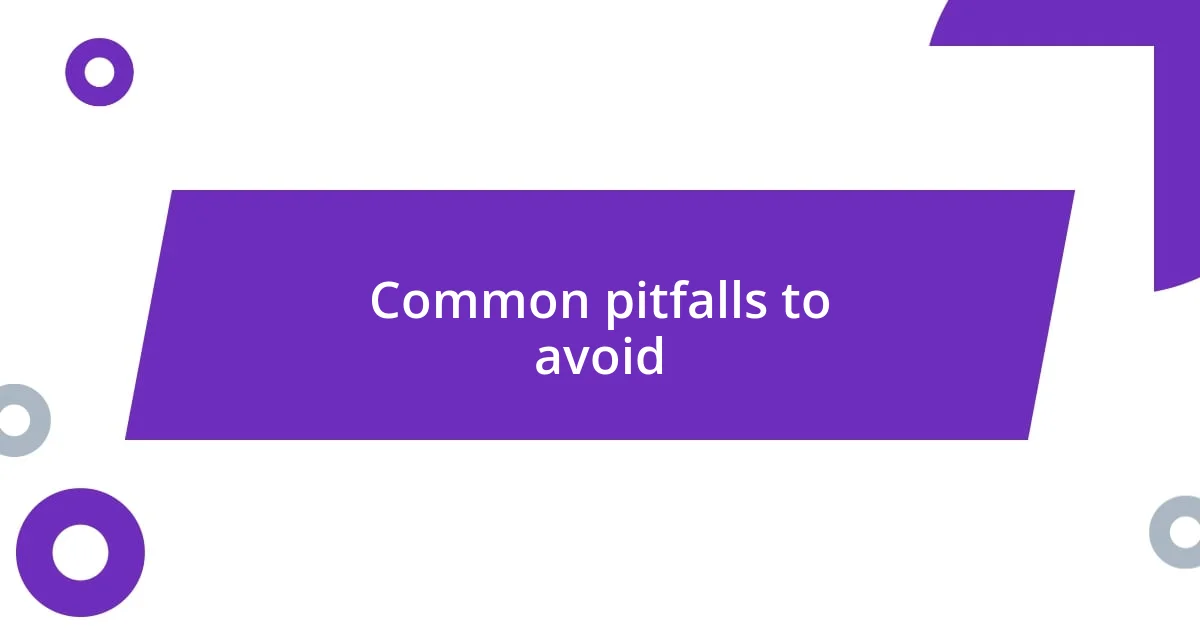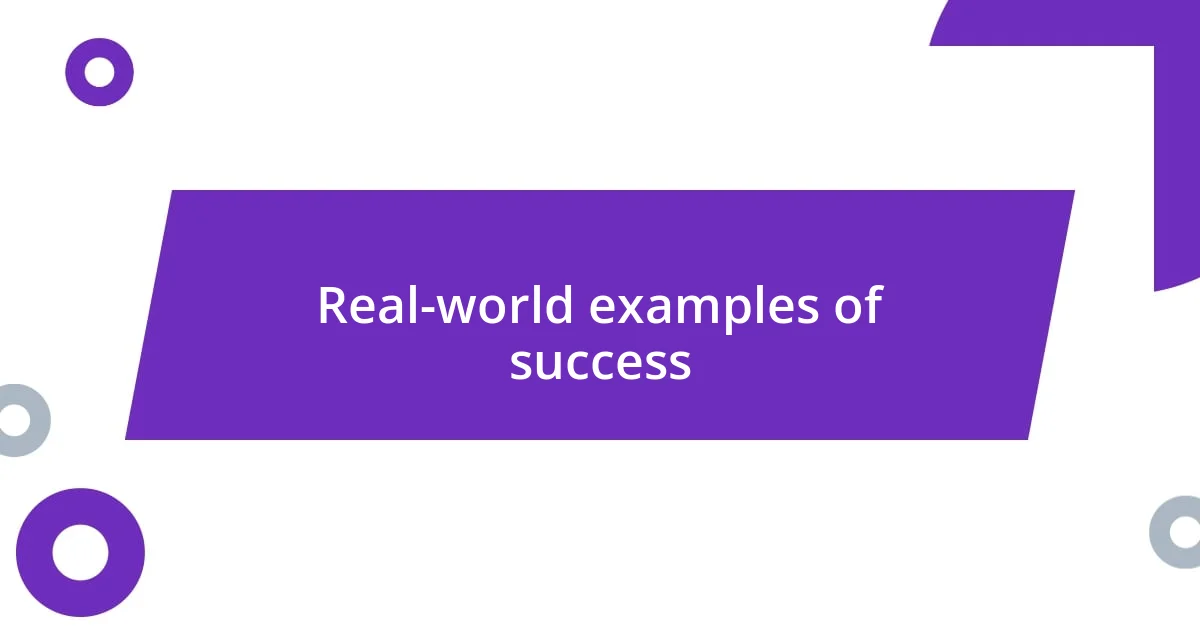Key takeaways:
- Collaboration incentives can be intrinsic (personal growth) or extrinsic (tangible rewards), and both types can significantly enhance motivation and team dynamics.
- Effective design of incentives should align with team goals and individual preferences to foster a supportive and collaborative environment.
- Regularly reassessing the impact of incentives and adjusting them as needed is crucial to maintain engagement and prevent stagnation within teams.

Understanding collaboration incentives
When I think about collaboration incentives, I can’t help but remember a project I once worked on where team input was not just welcomed, but actively encouraged. It became clear that recognizing individual contributions made everyone more invested in the team’s success. I found myself pondering—what makes people want to put in their best effort together?
Incentives for collaboration can take many forms, from tangible rewards like bonuses to intangible ones like recognition. Personally, I’ve found that simple acknowledgments, such as a shout-out during team meetings, can create a ripple effect, enhancing motivation across the board. Have you ever noticed how a little praise can ignite a passion for teamwork?
Moreover, the emotional pull of collaboration can be incredibly powerful. When we feel connected to our colleagues and see shared goals, it fosters a sense of belonging. I remember a time when brainstorming sessions built such camaraderie that we almost finished each other’s thoughts! It’s amazing how a supportive environment can turn a group of individuals into a coherent, motivated team.

Types of collaboration incentives
Collaboration incentives can largely be categorized into intrinsic and extrinsic motivators. Intrinsic incentives, like personal growth or a sense of achievement, resonate deeply with individuals. I recall a project where we were encouraged to pursue our ideas, resulting not only in innovative solutions but also in a powerful sense of personal satisfaction. There’s something about feeling that your contributions truly matter that can drive engagement like nothing else.
On the other hand, extrinsic incentives include tangible rewards, such as bonuses or prizes. I participated in a team competition where we were rewarded with gift cards for achieving our goals. The excitement of the competition made us push ourselves harder, and we didn’t just meet our targets; we exceeded them. It’s fascinating how a little external recognition can elevate the drive for teamwork.
Another layer worth discussing is social incentives, which can be incredibly impactful. When teams work in a supportive environment, the bonds formed can motivate individuals to go the extra mile for each other. I remember a phase in my career when we organized team lunches to celebrate our milestones. The anticipation of sharing a meal together created a warm atmosphere, making us all eager to contribute. It highlighted how relationships can serve as a catalyst for collaboration.
| Type of Incentive | Description |
|---|---|
| Intrinsic | Motivation derived from personal growth and achievement. |
| Extrinsic | Tangible rewards like bonuses and prizes for achieving goals. |
| Social | Incentives based on relationships and team bonding experiences. |

Benefits of collaboration incentives
The benefits of collaboration incentives are profound. From my experience, when individuals feel genuinely valued for their contributions, it boosts not only their morale but also the overall productivity of the team. I distinctly remember a time when a simple recognition program led to a noticeable surge in creativity within our group. It was as if everyone suddenly felt empowered to share bold ideas, knowing their efforts would be acknowledged.
- Enhanced team morale and cohesion.
- Increased creativity and innovation through shared ideas.
- Greater accountability, as team members feel responsible to one another.
- Strengthened relationships, cultivating a culture of support.
- Improved overall performance, often exceeding expectations.
Incentives foster a cooperative spirit that can transform how a team functions. I once worked in a department where we introduced a collaborative project leaderboard. It wasn’t just competitive; it brought everyone together in a healthy way to celebrate milestones. Seeing our names creep up that board wasn’t just about recognition—it sparked conversations and encouraged us to help one another, creating a synergy I hadn’t experienced before. The collective investment in our shared goals was truly rewarding.

Designing effective collaboration incentives
When designing effective collaboration incentives, it’s critical to align them with the specific goals of the team. I’ve often found that incentives lose their power if they don’t resonate with team members’ motivations. For instance, during a project focused on sustainability, we introduced a friendly competition with eco-friendly rewards. The results were astonishing; not only did we exceed our targets, but the alignment with our values fostered a deeper connection to the project’s mission.
It’s also essential to consider the timing and context of these incentives. I recall a time when our team celebrated project milestones with personalized shout-outs. The immediate feedback felt uplifting, reinforcing our commitment as we moved forward. Doesn’t it make you think about how timing can influence motivation? Creating moments of recognition during the work process can be just as impactful as offering rewards at the end.
Lastly, balancing intrinsic and extrinsic incentives can create a holistic approach to motivation. I once worked on a project where we paired monetary bonuses with opportunities for personal development workshops. This combination not only drove productivity but also nurtured individual growth. It’s rewarding to see people thrive both as team members and as individuals, isn’t it? That synergy can result in a culture of collaboration that truly flourishes.

Measuring success of incentives
To truly measure the success of collaboration incentives, I believe it’s important to set clear metrics. For example, I’ve used key performance indicators like project completion rates and team engagement scores to analyze whether the incentives are making an impact. Seeing a spike in these metrics is always a rewarding validation of the hard work we put in.
Another way to assess the effectiveness of these incentives is to gather real-time feedback from team members. I recall conducting surveys after implementing a new incentive program, asking for honest opinions on how these incentives affected collaboration. The responses were eye-opening; some team members felt more motivated, while others needed different types of recognition. Isn’t it fascinating to see how diverse perspectives can shape our understanding of success?
In my experience, qualitative assessment can be just as telling as quantitative data. During one project, I noticed a shift in team dynamics simply due to the new incentive structure we introduced. Conversations became more frequent, and there was a palpable sense of camaraderie. When I reflected on this change, I realized it was less about the numbers and more about the feeling of unity fostered by our efforts. Isn’t it true that sometimes the heart of success lies in the connections we build with one another?

Common pitfalls to avoid
When considering collaboration incentives, one common pitfall is neglecting individual preferences within the team. I remember a project where we blanketly offered a gift card as a reward, thinking everyone would appreciate it. Instead, I was surprised to learn that some team members felt more motivated by public recognition or time off. It’s so important to understand that what resonates with one person can completely miss the mark with another.
Another issue I’ve seen is the temptation to make incentives overly competitive. During a collaborative project, we introduced a scoreboard to track contributions. While it initially sparked excitement, it soon turned into tension within the team. I realized that instead of fostering cooperation, it was fostering rivalry, leading some to withhold information. Isn’t it ironic how a well-meaning incentive can backfire if it disrupts the team dynamic?
Lastly, failing to regularly reassess the effectiveness of incentives can lead to stagnation. I recall an initiative that worked wonders for a while but eventually lost its appeal because we didn’t adapt it. It’s vital to check in and adjust as needed; even the best-meant incentives can become stale. Can you relate to the feeling of motivation waning when something becomes routine? Staying responsive to the team’s evolving needs keeps the spirit of collaboration alive.

Real-world examples of success
One standout example in my experience came from a tech startup where we kicked off a collaborative project aimed at innovation. We implemented a ‘collaboration day’—a regular event where team members could pitch ideas and work together on their passion projects. The results were staggering; not only did this initiative lead to several successful product features, but it also built an incredible sense of community. It really illuminated how a simple, consistent space for collaboration can yield transformational outcomes.
In another scenario, I remember working with a marketing team that introduced peer-to-peer recognition as an incentive. Each week, team members would highlight a colleague’s efforts, sharing their achievements in a casual meeting. The impact was phenomenal; morale soared, and creativity flourished as team members felt valued and supported. It made me reflect: how often do we truly recognize each other’s contributions? Sometimes, it’s the small, consistent gestures that create the most ripples of positivity.
A more poignant example struck me during a cross-departmental initiative where communication was initially strained. After introducing a ‘team shout-out’ segment during meetings, I noticed a surprising shift. Departments that once barely interacted began to share insights and ideas freely. Watching that transformation, I couldn’t help but think—how powerful is it for team dynamics when we simply take the time to appreciate one another? The success here wasn’t just measured in metrics but in the warmth and collaboration we fostered together.














